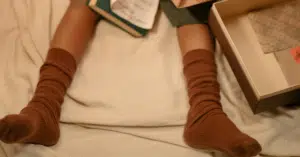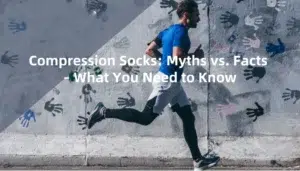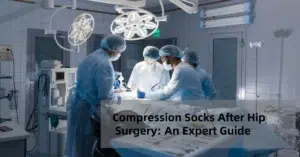Compression socks are known as a unique type of hosiery crafted to boost blood circulation, lower swelling, and expedite recovery. They are notably popular among countless athletes, travelers, and patients with distinctive medical conditions.
These socks come in various lengths and compression levels. Two common models are knee-high and calf compression socks. Choosing the right type of compression socks can greatly impact your comfort. That said, understanding the key differences between these socks is of the utmost importance.
Our post today aims to compare knee-high and calf compression socks. You will eventually be able to choose the right socks based on your needs, activities, and personal preferences.
What Are Compression Socks?
Compression socks are a kind of therapeutic hosiery. They can enhance the flow of blood in the legs. These socks exert graduated pressure: strongest at the ankle and lowest up the leg.
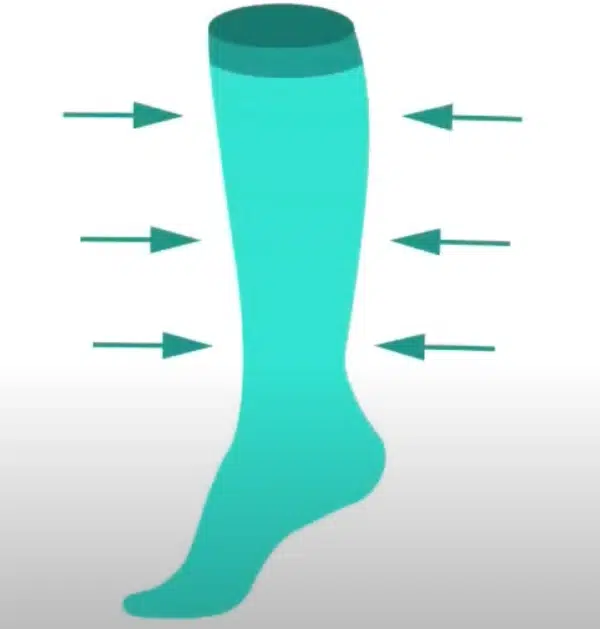
This specific pressure works against gravity. It helps blood flow back toward the heart and prevents the pooling of blood in the lower extremities. These socks are widely employed to minimize swelling, prevent blood clots, and alleviate symptoms of varicose veins, deep vein thrombosis (DVT), and chronic venous insufficiency.
Compression socks offer diverse compression levels. Their pressure values are compared in millimeters of mercury (mmHg). The most common pressure levels of these socks are:
- Mild: 10-15 mmHg
- Moderate: 15-20 mmHg
- Firm: 20-30 mmHg
- Extra Firm: 30-40 mmHg
The proper level of pressure for each wearer differs. It depends on their certain needs and medical conditions. Also, these socks are obtainable in diverse lengths, such as knee-high, thigh-high, and full-length, which empowers them to cover different sections of the leg.
To choose the right pair of compression socks, it is integral to understand how they work and what their different types are. This enables you to pick an option based on your needs, whether it is for daily use, sports recovery, or managing a health condition.
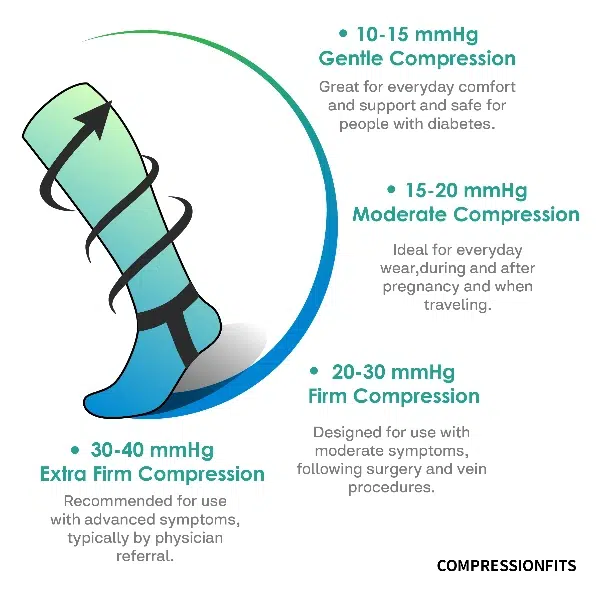
Knee-High Compression Socks
Knee-high compression socks cover the whole lower leg—from the foot up to below the knee. They comprehensively support the leg as they apply graduated pressure to enhance blood circulation and lower swelling.
These socks are particularly advantageous to wearers who sit, stand, or travel a lot. Also, they are useful for patients with medical conditions such as varicose veins or chronic venous insufficiency.
The preliminary benefit of knee-high compression socks is their capacity to support the entire lower leg. This makes them a wonderful option for those with conditions that affect circulation in the lower legs or those who deal with recurring leg swelling. Plus, athletes use these socks for faster muscle recovery after an intense workout because these socks reduce muscle fatigue and soreness.
Despite all the benefits of these socks, they can make you feel restricted, particularly in warm weather or during energetic activities. They might also be difficult to wear or take off in comparison with shorter styles. Still, the full-leg coverage of these socks makes them beneficial for heightened support and enhanced circulation.
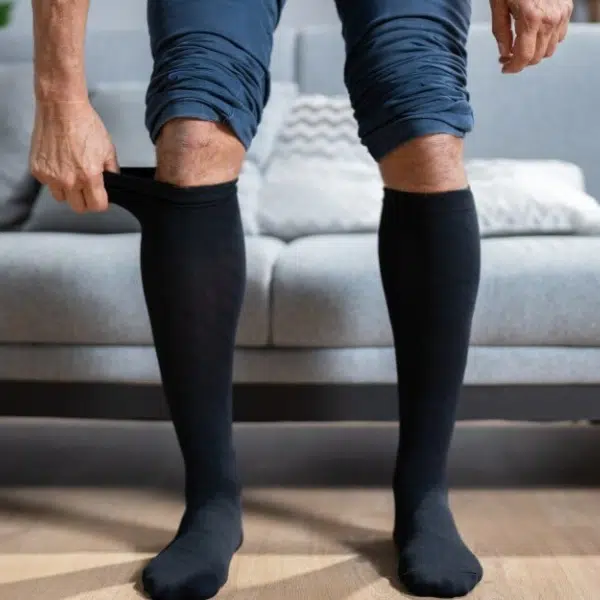
Source: https://www.sandiegovaricoseveintreatment.com/blog/compression-socks-and-vein-health-benefits/
Calf Compression Socks
Calf compression socks are known as a more purposeful kind of compression wear. They focus on the calf muscles, provide support, and enhance blood circulation without covering the foot.
These socks cover just above the ankle to below the knee. This makes them an outstanding choice for those who need the benefits of compression but do not want the full coverage of knee-high socks.
One of the critical benefits of calf compression socks is their flexibility. Since they do not cover the foot, you are comfortable to move. You can also wear them with any type of footwear, including sandals or minimalist shoes. This high level of flexibility makes these socks prevalent among runners, cyclists, and other athletes who value muscle support during intense workouts.
The concentrated compression of these socks on the calves allows them to minimize muscle fatigue, thwart cramps, and expedite recovery because they sweeten the blood flow and diminish lactic acid buildup.
Calf compression socks are also more breathable and less restrictive. This is a notable advantage of these socks in warmer climates or during drastic physical activity. However, they might be unable to deliver proper support for those with conditions that affect blood circulation below the ankle or those who need their leg more extensively.
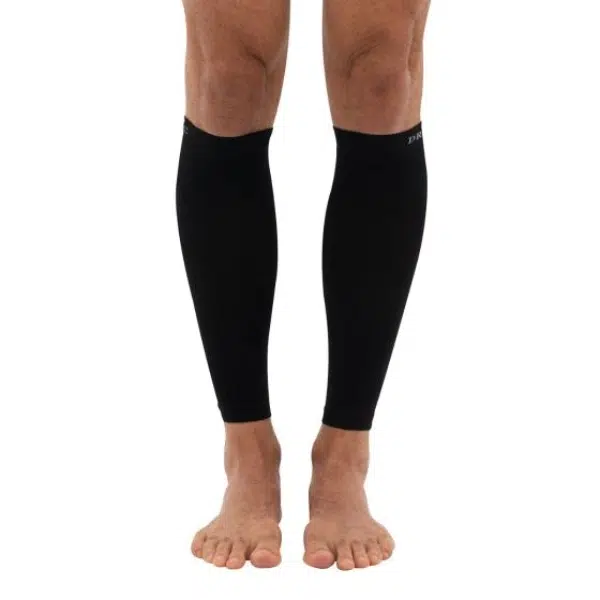
Source:https://www.drcomfort.com/business/therapeutic-sport-starter-over-the-calf-sleeve
Comparing Knee-High vs. Calf Compression Socks
Several elements affect the ultimate choice between knee-high and calf compression socks, including comfort, performance, durability, ease of use, and more. Each of these elements can notably affect which type of socks is better for your needs.
| Criteria | Knee-High Compression Socks | Calf Compression Socks |
| Comfort and Fit | Full-leg coverage; secure fit but can feel restrictive | More breathable and flexible, it allows greater freedom of movement |
| Performance | Comprehensive support; ideal for circulation issues | Targeted support for calves; great for muscle recovery in sports |
| Durability | More breathable and flexible, allows greater freedom of movement | Durable, especially in high-quality brands; less surface area to wear out |
| Ease of Use | It can be challenging to put on and take off due to the length | Easier to handle and wear; convenient for daily use |
| Aesthetic and Style | More visible, may not suit all outfits | More discreet; works well with various clothing styles |
| Price | Generally more expensive due to larger size and material use | Typically less expensive; depends on brand and quality |
Comfort and Fit
Knee-high compression socks cover your whole leg. This helps them provide a snug and secure fit. However, this full coverage can make you feel restricted, especially in warm weather.
On the other hand, calf compression socks are generally more breathable and flexible. They offer more comfort for those who value mobility. You will be more flexible when moving, which makes them the top choice for activities where the flexibility of legs is of great importance.
Performance
Both models of these socks are valuable in enhancing the circulation of blood and minimizing swelling. However, knee-high socks cover your entire lower leg, hence more comprehensive support. This is why they are more handy for those with conditions like varicose veins or chronic venous insufficiency.
Calf compression socks, on the other hand, focus on the calf muscles. That said, they are ideal for athletes who demand purposeful support during/after their workouts. These socks diminish muscle fatigue and accelerate recovery as they sweeten the blood flow to the calves.
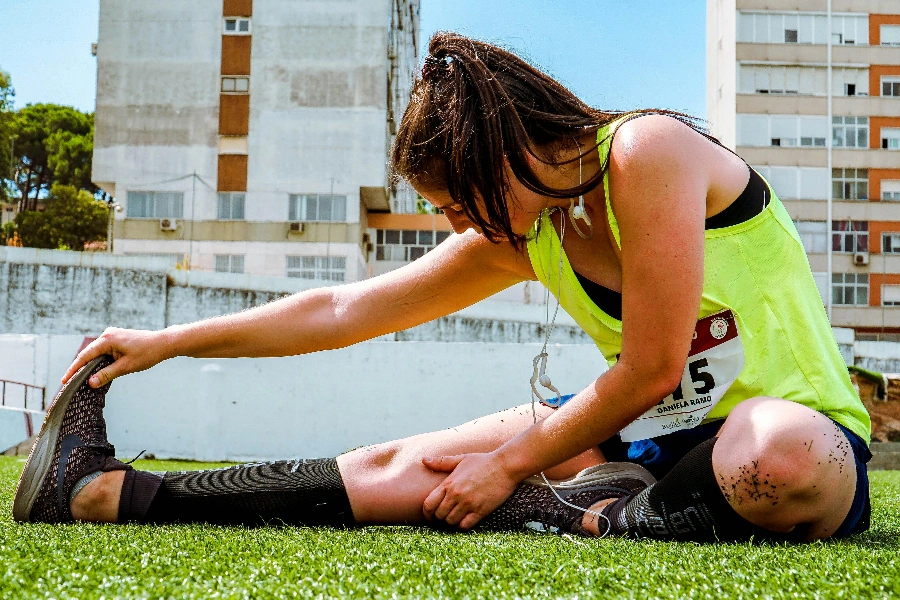
Durability
The durability of compression socks hinges mainly on their materials and how frequently you use them. Knee-high socks may experience more wear because they cover more of the leg, especially if you wear them routinely.
However, high-quality knee-high and calf compression socks are able to withstand recurring use and, at the same time, preserve their elasticity and effectiveness.
Ease of Use
Knee-high socks are somewhat more difficult to wear and take off because of their length and compression level. This is considered a drawback for those with confined mobility or flexibility.
Calf compression socks, on the other hand, are shorter and generally more effortless to handle. This makes them a more comfortable option for routine usage.

Aesthetic and Style
Knee-high compression socks are more visible, which makes them unable to fit all outfits, especially in professional or formal settings. However, calf compression socks are a more discreet option, especially when you wear them with pants or longer skirts.
Price
The price of these socks hinges greatly on their brand, material, and compression level. Generally speaking, knee-high socks are a little pricier because of their larger size and the amount of material used. However, both types are worth the money because of their health advantages.
Factors to Consider When Choosing Between Knee-High and Calf Compression Socks
You need to assess several factors and considerations before you choose between knee-high and calf compression socks.
- Personal Health Needs: If you have a certain medical condition—such as varicose veins, deep vein thrombosis (DVT), or chronic leg swelling—knee-high compression socks provide your legs with proper support. They deliver more comprehensive coverage. Calf compression socks are also beneficial, but they are more useful for milder issues or for those who demand muscle recovery instead of full-leg support.
- Activity Level and Type: Knee-high socks are better for long periods of standing, sitting, traveling, and post-workout recovery. Calf compression socks are more focused on the calf muscles, hence making them a better choice for activities like running, cycling, and other sports with high mobility.
- Climate and Weather: If your climate is warm, calf compression socks are more comfortable because of their breathability and less restrictive structure. Knee-high socks are more supportive but might be warmer and less useful for hot weather.
- Style Preference: See if you care about the number of socks that will be visible. Also, see if you need it to complement your usual style. Knee-high socks are more noticeable, while calf socks are more discreet.
- Medical Advice: If you are not sure about the choice, consult with a healthcare professional and ask for help with the decision based on your unique needs and health status.
FAQs about Compression Socks
Q: Can I wear compression socks throughout the day?
A: Yes, but it is integral to pick the right level of compression if you want to wear them all day.
Q: How can I choose the right compression level?
A: Mild is for daily use, moderate is for mild swelling, and firm or higher is for medical conditions.
Q: Can I wear calf compression socks for running?
A: Yes, these socks are wonderful for running as they provide muscle support and diminish fatigue during/after workouts.
Q: How can I properly care for my compression socks?
A: You can wash your compression socks in cold water with mild detergent and air dry them to lengthen their lifespan.
Q: Can I wear compression socks while sleeping?
A: It is generally not recommended to do so unless a healthcare professional suggests it. These socks are designed for when you are active.

Source:https://www.sleepfoundation.org/sleeping-positions
Final Words
The ultimate choice between knee-high and calf compression socks hinges on your distinctive demands, activities, and personal tendencies. Knee-high socks come with comprehensive lower leg support, hence a better choice for medical conditions or extended periods of standing/sitting.
Calf compression socks are more flexible and better for athletes and those who need comfort during physical activities. Both models deliver worthwhile benefits. Thus, understanding your demands is crucial when finalizing your choice.
